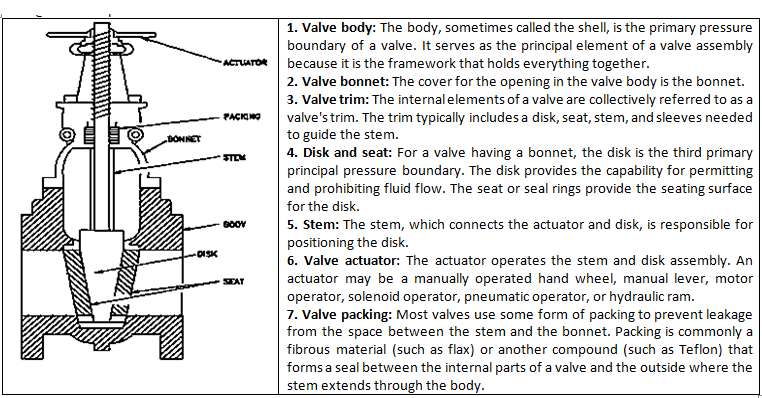SKEDSOFT
Introduction:
Valves are the most common single piece of equipment found in engines. Although there are many types, shapes, and sizes of valves, they all have the same basic parts.
Function of valves:
A valve is a mechanical device that controls the flow of fluid and pressure within a system or process. A valve controls system or process fluid flow and pressure by performing any of the following functions:
- Stopping and starting fluid flow
- Varying (throttling) the amount of fluid flow
- Controlling the direction of fluid flow
- Regulating downstream system or process pressure
- Relieving component or piping over pressure
There are many valve designs and types that satisfy one or more of the functions identified above. A multitude of valve types and designs safely accommodate a wide variety of industrial applications.
Parts of the valve:
Regardless of type, all valves have the following basic parts: the body, bonnet, trim (internal elements), actuator, and packing. The basic parts of a valve are:

Types of the valves:
- Gate valves
- Globe valves
- Ball valves
- Plug valves
- Diaphragm valves
- Reducing valves
- Pinch valves
- Butterfly valves
- Needle valves
- Check valves
- Swing valves